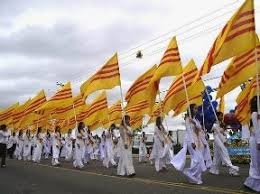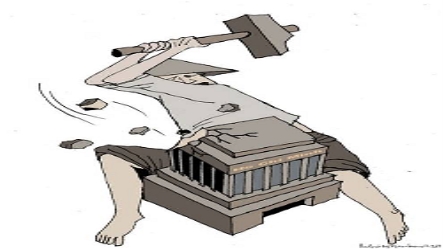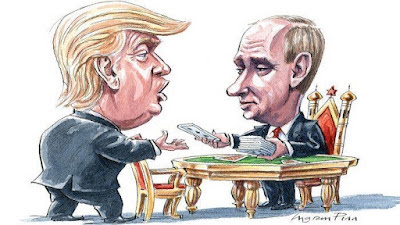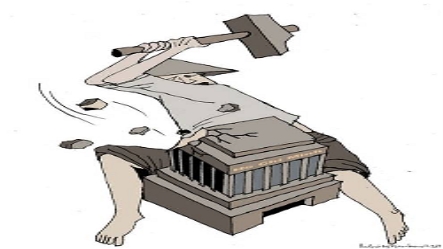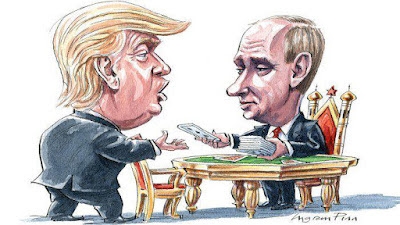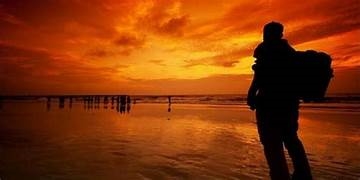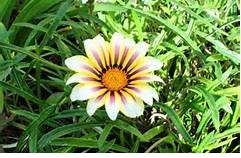Sức khỏe và đời sống
Xem thức ăn sản xuất ở Hong Kong
"Chả cá viên, thức ăn đông lạnh từ Hongkong. Ghê gớm quá. Nhập cảng vô Mỹ bán ở chợ VN, tiệm ăn VN và Tàu khựa mua về nấu cho mình ăn. Tự làm đồ ăn cho bảo đảm...
"Chả cá viên, thức ăn đông lạnh từ Hongkong. Ghê gớm quá.
Nhập cảng vô Mỹ bán ở chợ VN, tiệm ăn VN và Tàu khựa mua vềnấu cho mình ăn. Tự làm đồ ăn cho bảo đảm...Xứ hẹp người đông nhưng dân Tàu khựa là giống dân ở dơ, thiếu văn minh, Đi đến đâu cũng khạc nhổ, xả rác bừa bãi nên dân Tây phương sợ hãi và cực kỳ khinh miệt dân Tàu khựa về thói quen rừng rú này."Robert Vũ.Life inside Kowloon Walled City, the most densely populated place on earth, was far from easy before the chaotic cluster of interconnected high-rise buildings was demolished 20 years ago.Around 33,000 people lived in the overcrowded Hong Kong slum, which was blighted by poverty, organised crime, including drug dealing, gambling and prostitution, poor sanitation and inadequate services.Populated by families, business owners, drug addicts and gang members, the settlement was essentially lawless due to a territorial dispute between China and British Hong Kong, but both sides agreed in the 1980s to demolish it and replace it with a park.The former Chinese military site became a sprawling urban settlement after Japanese forces retreated during World War II and squatters moved in.Over the following decades it fell under the grip of the Triads, who were eventually forced out in the 1970s, and was notorious for brothels, casinos and opium dens as it lagged behind the rest of Hong Kong, although crime rates dropped in its later years.Before Kowloon Walled City was finally demolished in 1994, photographers Greg Girard and Ian Lambot spent five years capturing jaw-dropping images of daily life within the six-acre site - from children playing on rooftops to heroin addicts shooting up on the street.Scroll down for video+31Kowloon Walled City, in Hong Kong, had more than 300 high-rise apartments and an estimated 33,000 people crammed within the site+31Families with young children, who played on top of apartment buildings, lived among gang members and drug addicts in the slum+31The settlement was essentially lawless due to a territorial dispute between China and Hong Kong, but both sides agreed to demolish it+31Food processors freely admitted that they moved into the city to benefit from the low rents and to seek refuge from health inspectors+31A postman ducks under pipes and cables as he delivers mail to residents who lived along a rat-infested alley covered in rubbish+31Given the density of the six-acre site, residents had no immediate access to greenery and had to retreat to rooftops for sunlight+31Employee Kwok Tsang Ming ladles a batch of fried fishballs into baskets in a small factory off Kwong Ming Street+31Law Yu Yi, aged 90, lived in a small and exceptionally humid third-floor flat off Lung Chun First Alley with her 68-year-old daughter-in-law+31The former Chinese military site became an urban settlement after Japanese forces retreated during World War II and squatters moved in+31Airline passengers had a stunning view of the walled city when the flew into Hong Kong's Kai Tak Airport, which closed in 1998+31A resident upset with compensation protests on the pavement in front of Walled City during clearance operation by police+31Residents of Kowloon Walled City had access to almost every kind of business or service, including hair salons and doctors+31Hui Tung Choy operated a noodle business in the home he shared with his wife and two young daughters, who played in the workshop+31Lee Pui Yuen's store doubled as his family's home. A shop was located at the front while a bedroom was on the other side of a partition+31Because the family lived in the shop, it remained open throughout the day and evening until Pui Yuen and his wife went to bed+31Supermarket owner Chan Pak, who sold everything from string to beer, had seven pet cats when this portrait was taken+31+31Ovens used for the roasting of pigs (left) raised temperatures inside the city. At right, a worker carries buckets of eels at a fishball factory+31+31A resident uses the only remaining natural ground well (left). An addict injects heroin into his leg (right)+31Kowloon was under the Triads' grip at one time and was notorious for brothels and drug dens as it lagged behind the rest of Hong Kong+31In the 1980s, authorities proceeded with plans to demolish the walled city and work eventually got underway in 1993 following evictions+31The rooftops of Kowloon Walled City's high-rise buildings were covered with dozens of TV aerials and cables+31Many buildings only received a sliver of daylight every day, including the Tin Hau Temple, which was constructed in 1951+31Photographer Greg Girard captured jaw-dropping images of daily life within the six-acre site, including children playing on rooftops+31+31Residents lived in cramped quarters and used their balconies to store belongings (left). At right, rubbish-filled alley with little sunlight+31Many of the residents protested the evictions and said they were happy living in the squalid conditions, but they were forced out+31The government spent $2.7billion Hong Kong dollars in compensation and evacuations started in 1991. They were completed in 1992+31+31Clocks, family portraits and a calendar are displayed in a family home (left). The city (right, at night) had a dystopian appearanceHoàng Phạm chuyển
Bàn ra tán vào (0)
Các tin đã đăng
- "Phở Chua, Giấm Tiều" - by Mặc Lâm.
- "Cần phân biệt X-RAYS, CT SCAN, MRI, PET SCAN và ULTRASOUND" - By Bác Sĩ Hồ Ngọc Minh.- Trần Văn Giang ghi lại
- "Kinh Nghiệm của Người Bị Đau Tim" - by Nguyễn Hưng. Trần Văn Giang ghi lại
- Ôi “Thần Dược!” - Huỳnh Chiếu Đẳng ( Trần Văn Giang ghi lại )
- Cá Trắm nấu canh chua
Xem thức ăn sản xuất ở Hong Kong
"Chả cá viên, thức ăn đông lạnh từ Hongkong. Ghê gớm quá. Nhập cảng vô Mỹ bán ở chợ VN, tiệm ăn VN và Tàu khựa mua về nấu cho mình ăn. Tự làm đồ ăn cho bảo đảm...
"Chả cá viên, thức ăn đông lạnh từ Hongkong. Ghê gớm quá.
Nhập cảng vô Mỹ bán ở chợ VN, tiệm ăn VN và Tàu khựa mua vềnấu cho mình ăn. Tự làm đồ ăn cho bảo đảm...Xứ hẹp người đông nhưng dân Tàu khựa là giống dân ở dơ, thiếu văn minh, Đi đến đâu cũng khạc nhổ, xả rác bừa bãi nên dân Tây phương sợ hãi và cực kỳ khinh miệt dân Tàu khựa về thói quen rừng rú này."Robert Vũ.Life inside Kowloon Walled City, the most densely populated place on earth, was far from easy before the chaotic cluster of interconnected high-rise buildings was demolished 20 years ago.Around 33,000 people lived in the overcrowded Hong Kong slum, which was blighted by poverty, organised crime, including drug dealing, gambling and prostitution, poor sanitation and inadequate services.Populated by families, business owners, drug addicts and gang members, the settlement was essentially lawless due to a territorial dispute between China and British Hong Kong, but both sides agreed in the 1980s to demolish it and replace it with a park.The former Chinese military site became a sprawling urban settlement after Japanese forces retreated during World War II and squatters moved in.Over the following decades it fell under the grip of the Triads, who were eventually forced out in the 1970s, and was notorious for brothels, casinos and opium dens as it lagged behind the rest of Hong Kong, although crime rates dropped in its later years.Before Kowloon Walled City was finally demolished in 1994, photographers Greg Girard and Ian Lambot spent five years capturing jaw-dropping images of daily life within the six-acre site - from children playing on rooftops to heroin addicts shooting up on the street.Scroll down for video+31Kowloon Walled City, in Hong Kong, had more than 300 high-rise apartments and an estimated 33,000 people crammed within the site+31Families with young children, who played on top of apartment buildings, lived among gang members and drug addicts in the slum+31The settlement was essentially lawless due to a territorial dispute between China and Hong Kong, but both sides agreed to demolish it+31Food processors freely admitted that they moved into the city to benefit from the low rents and to seek refuge from health inspectors+31A postman ducks under pipes and cables as he delivers mail to residents who lived along a rat-infested alley covered in rubbish+31Given the density of the six-acre site, residents had no immediate access to greenery and had to retreat to rooftops for sunlight+31Employee Kwok Tsang Ming ladles a batch of fried fishballs into baskets in a small factory off Kwong Ming Street+31Law Yu Yi, aged 90, lived in a small and exceptionally humid third-floor flat off Lung Chun First Alley with her 68-year-old daughter-in-law+31The former Chinese military site became an urban settlement after Japanese forces retreated during World War II and squatters moved in+31Airline passengers had a stunning view of the walled city when the flew into Hong Kong's Kai Tak Airport, which closed in 1998+31A resident upset with compensation protests on the pavement in front of Walled City during clearance operation by police+31Residents of Kowloon Walled City had access to almost every kind of business or service, including hair salons and doctors+31Hui Tung Choy operated a noodle business in the home he shared with his wife and two young daughters, who played in the workshop+31Lee Pui Yuen's store doubled as his family's home. A shop was located at the front while a bedroom was on the other side of a partition+31Because the family lived in the shop, it remained open throughout the day and evening until Pui Yuen and his wife went to bed+31Supermarket owner Chan Pak, who sold everything from string to beer, had seven pet cats when this portrait was taken+31+31Ovens used for the roasting of pigs (left) raised temperatures inside the city. At right, a worker carries buckets of eels at a fishball factory+31+31A resident uses the only remaining natural ground well (left). An addict injects heroin into his leg (right)+31Kowloon was under the Triads' grip at one time and was notorious for brothels and drug dens as it lagged behind the rest of Hong Kong+31In the 1980s, authorities proceeded with plans to demolish the walled city and work eventually got underway in 1993 following evictions+31The rooftops of Kowloon Walled City's high-rise buildings were covered with dozens of TV aerials and cables+31Many buildings only received a sliver of daylight every day, including the Tin Hau Temple, which was constructed in 1951+31Photographer Greg Girard captured jaw-dropping images of daily life within the six-acre site, including children playing on rooftops+31+31Residents lived in cramped quarters and used their balconies to store belongings (left). At right, rubbish-filled alley with little sunlight+31Many of the residents protested the evictions and said they were happy living in the squalid conditions, but they were forced out+31The government spent $2.7billion Hong Kong dollars in compensation and evacuations started in 1991. They were completed in 1992+31+31Clocks, family portraits and a calendar are displayed in a family home (left). The city (right, at night) had a dystopian appearanceHoàng Phạm chuyển


































